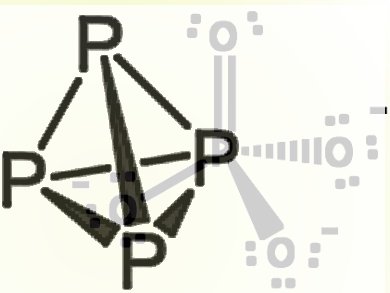Phosphorus is an essential trace element for all living organisms, for example, 1 % of the human body consists of phosphorus. Phosphorus occurs naturally in phosphate ores, mainly as Ca5(PO4)3OH, which is mined in deposits.
The largest amount of phosphate is used by the fertilizer industry (ca. 85 %), and the largest customer for this industry is India. About 15 % of phosphates are used in the field of animal nutrition and for various technical and food applications. Elemental phosphorus is used as a starting material for various phosphorus derivatives, which are used primarily in flameproofing, as well as for stabilizers in motor oils.
Peak phosphorus denotes the point in time at which the maximum global phosphorus production rate is reached. The phosphate reserves worldwide are estimated to be about 70 billion tons (2012) and the annual consumption is currently at about 220 million tons. Therefore, these reserves should last for more than 300 years.
The most important deposits are in North Africa, especially Morocco, and in China. Areas, such as Europe and India, are poor in phosphorus. So the main problem within the next years is not the scarcity of phosphorous, but its distribution. After having been stable for many years, the price of phosphate rock has been fluctuating since a steep increase in 2008. A similar situation like with rare earths may develop where phosphorus becomes a geostrategic time bomb. However, in contrast to oil, phosphorus is not replaceable.
Recycling of Phosphorus
Europe has hardly no phosphate deposits, but industrial plants for the production of phosphates, therefore, phosphate recycling has been utilized in the past 20 years at various locations. Streams from wastewater treatment plants could serve as a source of phosphate, but also direct access to excretory products in animal husbandry, as well as animal bone meal are possibilities.
The human being excretes 2 g of phosphorus per day. In Germany ca. 120,000 t of P2O3 per year accrue in sewage sludge. Good approaches to recycle phosphorus from sewage sludge already exist in Europe on a small industrial scale. However, from today’s perspective, they are not yet economical.
Challenges include that phosphate from the sewage sludge is hard to access and must be selectively made bioavailable. It has a high water content and low phosphate content (ca. 10–15 % P2O5), and is contaminated with heavy metals, such as Fe, Zn, Cu, Cd.
This was discussed by Dr. Alexander Maurer, ICL Performance Products, Ludwigshafen, and Dr. J. Reuvers, BASF SE, Ludwigshafen, both Germany, at the 723rd DECHEMA Colloquium on 3 April 2014 at the DECHEMA-Haus, Frankfurt am Main, Germany.
Budenheimer Carbonic Acid Process
Dr. Rainer Schnee, Chemische Fabrik Budenheim KG, Budenheim, Germany, introduced the Budenheimer Carbonic Acid Process. It recovers phosphates from sewage sludge by environmentally friendly extraction with carbon dioxide. A sustainable phosphate-rich fertilizer that is harmless to health and has high plant availability is produced.
In the process, sewage sludge is extracted at a pressure of 5–10 bar with CO2. Then the sludge is separated from the extract by solid/liquid separation. This is followed by precipitation, which gives the phosphate fertilizer. The current phosphate-recovery rate is approx. 50 %; the aim is to increase this to 60–70 %. The CO2 is recycled. Every type of sewage sludge can be used, even that from wastewater treatment plants with phosphate removal by iron compounds. There is no need for thermal or chemical treatment.
Budenheim operates with the support of the Investitions- und Strukturbank Rheinland-Pfalz (ISB) a pilot plant with a 25–100 L extraction volume. The extraction time is approx. 30 min, CO2 flow-rate approx. 400 L/h.
The company plans a 1 m3 extraction plant in a wastewater treatment plant and in 2017 an industrial facility should be designed with 100 m3 volume extraction. According to their calculations, their fertilizer would be less expansive than conventional ones.
RecoPhos Process
Professor Martin Bertau, Technical University of Freiberg, Germany, introduced the RecoPhos Process, which produces the triple superphosphate fertilizer P38. It meets the requirements of the Fertilizer Regulation and has already proved to be economical. So far, 6,000 tonnes have been produced. It is the first method that has already produced on an industrial scale.
In the process aggregates are mixed with 1 part of sewage sludge and 2 parts of H2PO4. Then the mixture is granulated, dried, and the RecoPhos fertilizer is obtained. The aim is to produce the H2PO4 from the sewage sludge. Other challenges include reducing the amount of heavy metals in the fertilizer – although they say they are already within the required guidelines.
- Peak Phosphor: Eine Herausforderung für die chemische Technik
Dechema Colloquium - Phosphate Rock Price




